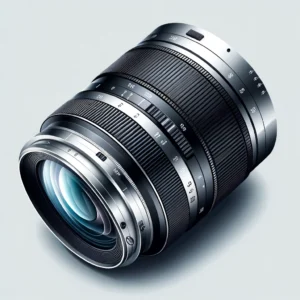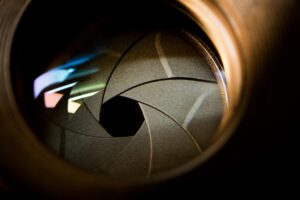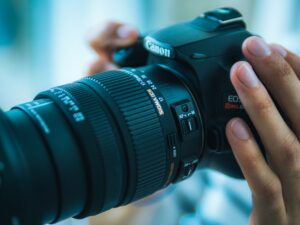Why use a lens hood? A lens hood is an essential camera accessory designed to block unwanted light, thereby preventing glare and lens flare in your photographs.
But that’s just scratching the surface.
Dive deeper into this guide, and you’ll discover the advantages of using lens hoods, from enhancing image quality to protecting your camera lens.
Whether you’re a seasoned photographer or just starting out, understanding the importance of a lens hood can elevate your photography game. Read on!
What Exactly is a Lens Hood?
A lens hood, often referred to as a lens shade, is a device that attaches to the front of a camera lens.
Its primary function? To block unwanted light sources, preventing glare and lens flare in your photographs.
But it’s not just about blocking light.
The design and geometry of a lens hood take into account the focal length of the lens, the size of the front lens element, and the dimensions of the image sensor or film in the camera.
This ensures that the hood effectively blocks stray light without causing vignetting or appearing in the frame.
When compared to other camera accessories, like filters or lens caps, lens hoods serve a unique purpose: they enhance image quality by controlling light, while also offering physical protection.
The Compelling Reasons to Use a Lens Hood
Eliminating Lens Flare
Lens flare is a common challenge for photographers, especially when shooting against a bright light source like the sun.
It manifests as a series of colorful circles or a hazy light across the image.
By extending beyond the lens and blocking out excess light, a lens hood acts as a shield, significantly reducing or even eliminating lens flare.
Enhancing Image Contrast and Vibrancy
Stray light doesn’t just cause flare; it can also wash out your image, reducing contrast and making colors appear muted.
With a lens hood attached, stray light is minimized, ensuring that your photos have rich colors and sharp contrast.
This is particularly crucial when trying to capture vibrant landscapes or colorful subjects.
Physical Protection for Your Lens
Beyond light control, a lens hood offers a line of defense for your lens.
It can protect against accidental touches, smudges, and scratches. If you’re shooting outdoors, it can shield the lens from elements like rain, sand, or dust.
Think of it as a bumper for your lens, especially when moving through crowded spaces or rough terrains.
For more on lens protection, check out this article on whether camera lens protectors are necessary.
Reducing Glare and Reflections
Ever tried capturing a scene through a window or near water and noticed annoying reflections?
A lens hood can help.
By minimizing the angle of light that enters the lens, hoods can significantly reduce glare and reflections, especially when shooting through glass or other reflective surfaces.
Types of Lens Hoods and Their Unique Characteristics
| Type of Lens Hood | Primary Use | Advantages |
|---|---|---|
| Cylindrical | Prime and Telephoto Lenses | – Blocks stray light effectively – Offers robust protection to the lens front element |
| Petal (Tulip) | Standard Zoom and Wide-Angle Lenses | – Reduces mechanical vignetting – Allows more light into the corners – Often more compact and ergonomic |
| Rectangular | Video and Cinematography Lenses | – Provides consistent shading across all frames – Often adjustable to match the zoom level |
Cylindrical Lens Hoods

Cylindrical lens hoods are fully circular and typically longer.
They’re often used with prime or telephoto lenses.
Their design ensures that they block light effectively, especially from the sides.
However, they might not be the best choice for wide-angle lenses as they can cause vignetting.
For more on lens types and their characteristics, explore how camera lenses work.
Petal (Tulip) Lens Hoods

Petal or tulip lens hoods are more common and recognizable with their unique flower-like design.
They have curved notches that allow more light into the corners of the image, making them ideal for standard zoom lenses and those with wider angles.
The design ensures that they block stray light effectively without appearing in the frame or causing vignetting.
They’re versatile and often the go-to choice for many photographers.
Choosing the Right Lens Hood for Your Photography Needs
Ensuring Compatibility with Your Lens
Before you rush out to buy a lens hood, it’s important to ensure it’s compatible with your lens. Not all lens hoods are created equal.
The size, design, and type of lens you have will dictate the kind of lens hood you need.
For instance, a lens hood designed for a 50mm prime lens won’t fit a 70-200mm telephoto lens.
Always check the diameter and model of your lens. Many lenses have their hood model number printed on them, making it easier to find a match.
If you’re unsure about lens compatibility, our guide on how to choose the right camera lens can offer more insights.
The Right Hood for the Right Environment
Your shooting environment plays a significant role in the type of lens hood you should use.
If you’re often shooting in bright outdoor conditions, a deeper hood might be more beneficial.
On the other hand, if you’re indoors or in low light, a shorter hood or even no hood might be the way to go.
Always consider the primary sources of light in your environment and how they might affect your shot.
Lens Hoods and Wide-Angle Lenses
Wide-angle lenses present a unique challenge when it comes to lens hoods.
Due to their broad field of view, there’s a risk that the hood will appear in the frame, causing vignetting.
Petal or tulip lens hoods are often recommended for these lenses, but even then, caution is necessary.
Always test your lens hood with your wide-angle lens to ensure no parts of the hood are visible in the shot.
Properly Attaching and Using Your Lens Hood
Step-by-Step Guide to Lens Hood Attachment
- Identify the Mounting Points: Look for the grooves or notches on both the lens and the hood.
- Align the Hood with the Lens: Match the hood’s grooves with those on the lens.
- Twist Clockwise: Gently twist the hood clockwise until it clicks into place. Ensure it’s securely attached.
- Check for Obstructions: Look through the viewfinder or LCD screen to ensure the hood isn’t visible in the frame.
Common Mistakes When Attaching a Lens Hood and How to Avoid Them
- Over-Tightening: While it’s essential to secure the hood, over-tightening can damage the lens threads. Always attach with care.
- Using the Wrong Hood: As mentioned, ensure your hood is compatible with your lens to avoid vignetting or other issues.
- Forgetting to Adjust for Zoom Lenses: If you’re using a zoom lens, remember that as you zoom in or out, the angle of view changes. Always check to ensure the hood isn’t in the shot, especially when at wider angles.
Caring for Your Lens Hood: Cleaning and Storage
Effective Cleaning Techniques
Maintaining a clean lens hood is just as crucial as keeping your lens spotless.
Here’s a step-by-step guide:
- Remove Loose Dirt: Use a soft brush to gently brush off any loose dirt or debris.
- Wipe with a Damp Cloth: For stubborn smudges, use a lint-free cloth dampened with a bit of water. Avoid soaking the hood.
- Dry Thoroughly: Always ensure the hood is dry before reattaching to prevent moisture from reaching the lens.
For more on lens care, our article on how to clean a camera lens offers a deep dive into best practices.
Storing Your Lens Hood Safely
When not in use, it’s essential to store your lens hood properly:
- Reverse on the Lens: Many hoods can be reversed and attached to the lens, saving space and offering protection.
- Use a Pouch or Case: Storing the hood in a pouch or case can protect it from scratches and dust.
- Dedicated Compartments: Some camera bags come with compartments designed for lens hoods, ensuring they remain safe and easily accessible.
Lens Hoods in Diverse Lighting Conditions
Benefits in Bright Scenarios
Lens hoods are indispensable when it comes to shooting in bright conditions.
They serve as a shield, blocking out excessive sunlight and preventing the dreaded lens flare.
This ensures that your images remain crisp, with vibrant colors and devoid of unwanted light artifacts.
Whether you’re photographing landscapes in the glaring midday sun or capturing moments on a sunlit beach, a lens hood can be the difference between an average shot and a stunning one.
Using Lens Hoods in Low Light
At first glance, using a lens hood in low-light scenarios might seem unnecessary.
However, even in dimly lit environments, there can be sources of stray light, such as streetlights or vehicle headlights. These can introduce unexpected flares or glares into your photographs.
By using a lens hood, you can effectively avoid these issues, ensuring clarity in your shots.
However, it’s essential to be mindful when using flash in tandem with a lens hood, as it can sometimes result in unwanted shadows.
Lens Hoods with Other Camera Accessories
Compatibility with Filters
A common question among many new photographers is the compatibility of lens hoods with filters.
The reassuring news is that, in most scenarios, they can be used together.
Filters, designed to fit the lens’s diameter, don’t hinder the attachment of a lens hood.
However, it’s important to ensure that both the filter and the lens hood are compatible to prevent potential optical issues.
When using both, it’s best to first attach the filter, followed by the lens hood.
Lens Hoods and Flash Photography
Using flash while having a lens hood attached can present some challenges.
Depending on the flash’s position and the lens hood’s size, there’s a possibility of the hood casting a shadow on the subject.
This is particularly true for built-in flashes on DSLRs and mirrorless cameras.
To counteract this, ensure the flash is positioned high enough to clear the hood or consider utilizing an external flash, offering more flexibility in positioning.
Debunking Common Myths About Lens Hoods
Are Lens Hoods Always Necessary?
Lens hoods are undeniably beneficial in many photography scenarios.
However, like any tool, they have their time and place.
There are situations where using a lens hood might not provide any significant advantage. For instance:
- Indoor Studio Photography: When you have complete control over the lighting, lens flares are less of a concern.
- Macro Photography: When shooting up close, especially with a dedicated macro lens, the subject often blocks out any stray light that could cause flare.
- Certain Wide-Angle Lenses: Some ultra-wide-angle lenses have a field of view so broad that a lens hood might intrude into the frame, causing vignetting.
It’s essential to assess the situation and decide whether a lens hood will be necessary.
The Impact of Lens Hoods on Image Quality
A common misconception is that lens hoods can degrade image quality.
In reality, lens hoods are designed to enhance image quality by preventing unwanted light affecting your photograph.
They do not introduce any optical elements that could potentially degrade the image.
Instead, by blocking stray light, they ensure that only the light you want enters the lens, leading to clearer, more vibrant photos.
FAQs
Why is a Lens Hood Important?
A lens hood primarily prevents unwanted light from entering the lens, reducing glare and enhancing photo quality.
Is It Essential to Always Have a Lens Hood On?
While beneficial in many situations, lens hoods aren’t always necessary. Their usage depends on the lighting conditions and the desired effect.
What are the Advantages and Drawbacks of Lens Hoods?
Lens hoods reduce lens flare, improve image contrast, and offer lens protection. However, they can add bulk and may cause vignetting in wide-angle shots.
How Does a Lens Hood Affect Image Clarity?
By blocking stray light, a lens hood can significantly improve image contrast and color saturation, leading to clearer photos.
Why Might Someone Opt Out of Using a Lens Hood?
Some photographers find them bulky or unnecessary for specific shots, or they might be shooting in conditions where a hood isn’t beneficial.
Should I Opt for a Lens Hood or a Filter?
Both serve different purposes. While lens hoods prevent flare and protect the lens, filters can protect and also modify the light entering the lens.
Do Expert Photographers Recommend Lens Hoods?
Yes, many professional photographers use lens hoods to enhance image quality and protect their lenses.
Is a Lens Hood Useful During Rainy Conditions?
Absolutely! A lens hood can protect the lens from raindrops and moisture, ensuring clearer shots.
Can a Lens Hood Minimize Flare?
Yes, one of the primary functions of a lens hood is to reduce lens flare caused by stray light.
Why Do Some Photographers Reverse Their Lens Hoods?
Reversing and storing the lens hood on the lens makes it more compact for transport. It’s a storage technique, not a shooting position.
Is It Possible to Pair a Polarizing Filter with a Lens Hood?
Yes, many lens hoods can be used with filters, but it’s essential to ensure compatibility to avoid vignetting.
Is a Lens Hood Beneficial for Astrophotography?
For astrophotography, lens hoods can be helpful in blocking stray light sources, ensuring clearer images of the night sky.
How Effective is a Lens Hood in Macro Photography?
In macro photography, lens hoods can prevent lens flare and also protect the lens from potential damage, especially when shooting close to subjects.
Conclusion
Lens hoods, often overlooked, play a key role in modern photography.
They not only protect your lens but also ensure that your images are free from unwanted light sources, enhancing overall image quality.
Whether you’re a seasoned professional or a beginner, understanding the importance of lens hoods and incorporating them into your photography toolkit can take your photographs to the next level.


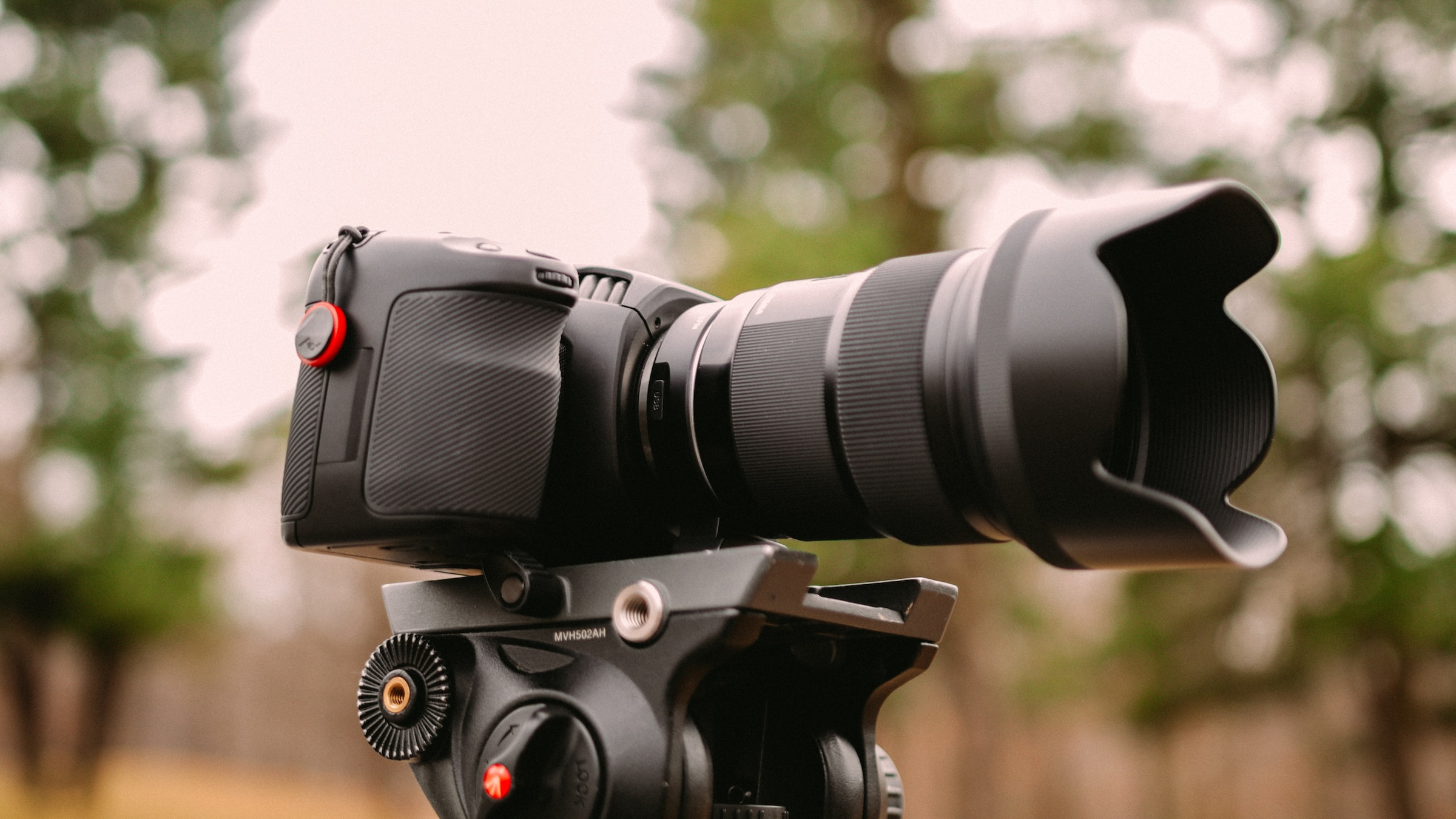
![Read more about the article How to Store Camera Lenses Properly for Longevity and Performance [2023]](https://photographyexplorer.com/wp-content/uploads/2023/08/How-to-Store-Camera-Lenses-Properly-300x200.jpg)
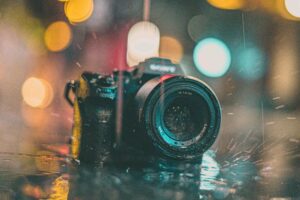
![Read more about the article Should I Buy Used Camera Lenses? Insights, Advice & Recommendations [2023]](https://photographyexplorer.com/wp-content/uploads/2023/08/Should-I-Buy-Used-Camera-Lenses-300x200.jpg)
